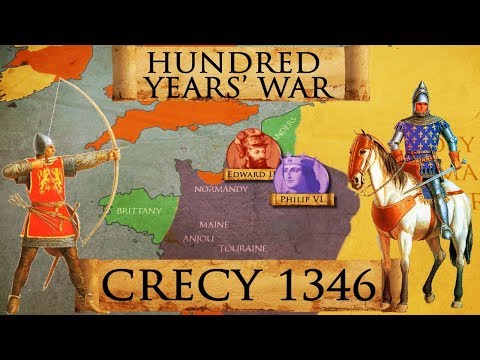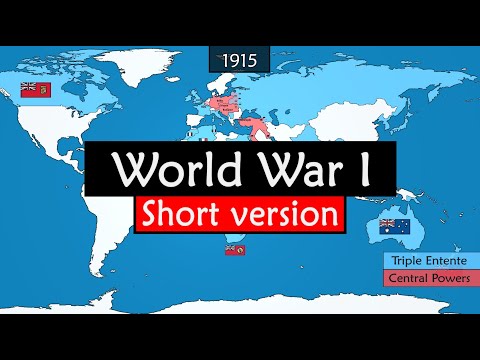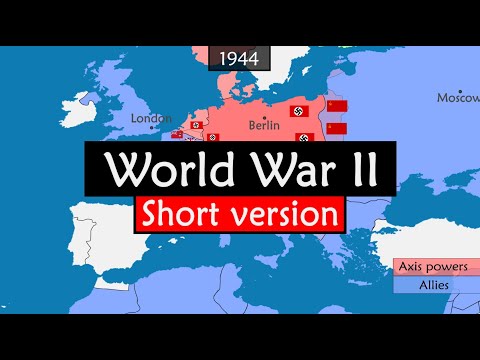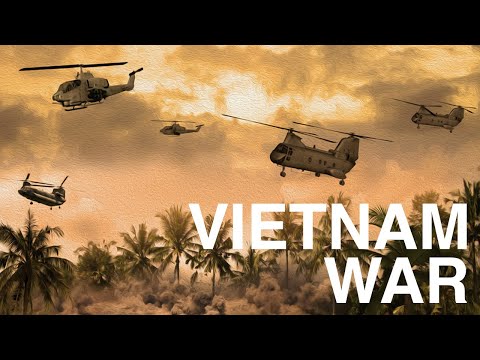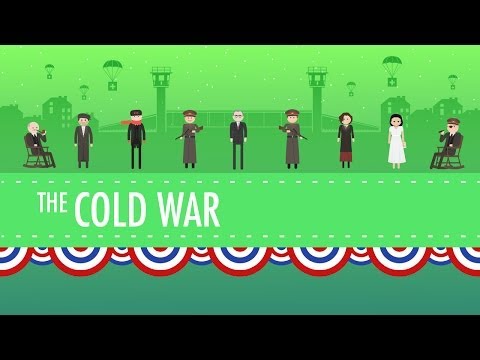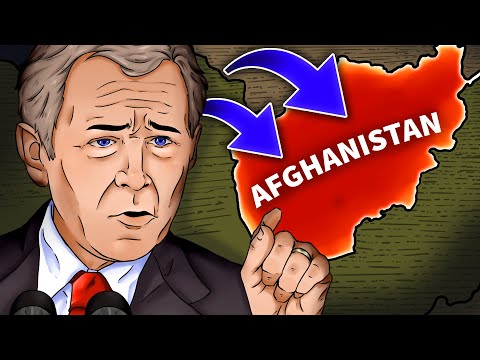That’s where many find themselves right now, in the waning months of the war against COVID-19. With vaccines coming but a long, dark winter ahead, no one wants their names added to the soaring death tolls we’ll see before science finally conquers the worst pandemic in a century. No one wants to die this close to the finish line – to be the least fortunate soul. Let’s look at some least fortunate soldiers. 10 Times War Was Declared For Really Stupid Reasons
10 Hundred Years’ War: John Talbot (and 4,000 others)
Talk about bad timing… try being the last to die in a century-long war. Watch this video on YouTube The Hundred Years’ War was a series of conflagrations from 1337 to 1453, waged between England’s two ruling parties – the House of Plantagenet and its male-heritage-line offshoot House of Lancaster – and the French House of Valois, for the right to rule France. Paused and recommenced over 116 years, the protracted war saw five generations of kings from the rival dynasties compete for the largest throne in Western Europe. No exacting figure of military fatalities exists, but historians place the Hundred Years’ War death toll at roughly 3.5 million lives, making it among the deadliest conflicts in history. The final major engagement, 1453’s Battle of Castillon, put an exclamation point on a French victory in which England lost nearly all territory on mainland Europe. The battle resulted in only about 100 French casualties, while English losses eclipsed 4,000. Among the reasons for this lopsided result is that Castillon marked the first major battle in which field artillery – namely, cannons – played a decisive role. Another reason for the bloodbath, though, was English commander John Talbot. Not realizing the cannon had made certain military tactics horrifically obsolete, Talbot stormed a fortified French position without reinforcements, then refused to withdraw even after realizing the dug-in French forces equaled or outnumbered his own. Defenseless and with no one coming to help, nearly the entire army was cut apart by cannon fire, Talbot included.[1]
9 American Civil War: John Jefferson Williams
Even after April 9, 1865, when Robert E. Lee surrendered the Army of Northern Virginia to Union general Ulysses S. Grant at Appomattox Courthouse, skirmishes and even full-fledged battles continued for several weeks. Confederate president Jefferson Davis ordered various smaller, scattered rebel forces to continue the conflict. And though the largest remaining band of Confederates – Joseph E. Johnston’s Army of Tennessee – instead chose to lay down its arms to general William Tecumseh Sherman in North Carolina, others fought on. Watch this video on YouTube In southern Texas, Union and Confederate forces had sensed the war nearing an end for months, and had kept an unofficial truce for most of 1865. Enter Union colonel Theodore H. Barrett. Newly assigned to command an all-black unit and never having been involved in combat, on May 12 Barrett ordered an unprovoked attack on a Confederate camp near Fort Brown, on the banks of the Rio Grande. Officially called the Battle of Palmito Ranch, Barrett’s two-day attack failed miserably. Confederate casualties were a mere half-dozen, including none killed. In addition to over 100 captured, Union casualties numbered over 115 with up to 30 killed; incredibly heavy losses considering only 500 Northerners participated. On May 13, it’s generally believed that 22-year-old John Jefferson Williams, a private in the 34th Regiment Indiana Infantry, became the last soldier to die in the Civil War. While some argue the final death actually occurred six days later in Alabama, that fatality – corporal John W. Skinner – was caused by an ambush rather than anything resembling a battle.[2]
8 Second Boer War: Ferdinandus Jacobus Potgieter
Fought from October 1899 through May 1902, the Second Boer War pitted British Empire forces – England, Canada, Australia and New Zealand – against two independent republics, the South African Republic and the Orange Free State. The latter two were known as Boer states: self-governed republics created by Dutch-speaking inhabitants of southern Africa in the latter half of the 19th Century. Watch this video on YouTube Officially, the conflict was fought over the British Empire’s continued, yet somewhat waning, influence in South Africa. However, what really triggered the guns was the discovery of diamonds and gold. Outmanned and outgunned, the Boers resorted to guerrilla warfare that, for a time, was highly effective against their more conventional opponents. In fact, over the course of the war the British suffered more than 22,000 killed to the Boers 6,200. But while uneven losses and homefield advantage may have won the day under business-as-usual conditions, the British would not be denied what proved among the world’s richest diamond reserves. The Empire brought in more men and more materiel and employed scorched-earth measures to smoke the Boers out of the brush. The war came to a climax on April 11, 1902, during the Battle of Rooiwal. By this time, the British had their foes cornered, giving the Boers two options: surrender or charge an entrenched line. They chose the latter, gallantly storming the British guns on horseback. Their attack was easily repulsed. Fifty-one Boers were killed, including the engagement’s chief officer, commandant Ferdinandus Jacobus Potgieter. The aftermath of his death became one of the war’s most haunting images.[3]
7 World War I: Lieutenant Tomas
Much has been made about American Henry Gunther, who is officially recognized as the last soldier killed in the first World War. With the armistice scheduled to take effect at 11:00am on November 11 (11/11 at 11), 1918, Gunther and a handful of other soldiers advanced on a German machine gun installment. The guns opened fire, and the Americans hit the deck. Realizing it was just a few minutes until 11, everyone stayed put. Everyone, that is, except Gunther. He got up, charged and, refusing to stand down even after German gunners waved him off, got himself killed. The time was 10:59am. Oddly considering his seemingly stubborn stick-to-it-iveness, a year earlier Gunther had been demoted after military censors intercepted a letter he sent home criticizing the war. Gunther was not, however, the last combatant killed that day. While Germany’s records are unclear about its final combat death, the last German – and last soldier overall – killed was likely an infantryman known only as Lieutenant Tomas. In the moments after 11:00, he approached some American soldiers to let them know that, since the war was over, he and his men were vacating a house and it would be available for their use. Unfortunately, no one had informed the Americans of the Armistice, so they shot and killed him.[4]
6 World War I, Part II
The final day of fighting in World War I was so vicious that a second entry is deserved commemorating the final deaths from three other major Western players: England, France and Canada. Even while the world began celebrating the cessation of the “war to end all wars,” November 11, 1918 saw nearly 2,700 killed and 11,000 casualties – more than those killed, wounded or missing when, 27 years later, Allied forces stormed the shores of occupied France on D-Day. Watch this video on YouTube British losses that morning were roughly 2,400, with 40-year-old private George Edwin Ellison the last to die at 9:30am. Ellison was scouting the outskirts of Mons – the same place where the first British soldier died at the war’s onset. Sadly, Ellison had survived four years in the trenches only to die 90 minutes before the ceasefire. Some 88 minutes later, 25-year-old Canadian private George Lawrence Price nearly stole Henry Gunther’s unfortunate legacy. He was shot by a sniper at 10:58am. French losses that morning were around 1,200. Augustin Trébuchon became the last Frenchman killed when, at 10:50am, he was shot while carrying a message to the front lines. While it would be nice to believe this message was worth dying for, it stated that soup would be served to soldiers shortly after the 11:00 ceasefire.[5] 10 Really Surprising Facts About Ancient Warfare
5 World War II: Anthony Marchione
Three days after Japan surrendered to Allied Forces on August 15, 1945, 19-year-old Army photographer Anthony Marchione and a small crew took off in two B-32 Dominator bombers on a routine reconnaissance mission. The photos they intended to take were meant to reassure Allied Forces that the Empire was respecting the cessation of hostilities. Watch this video on YouTube Perhaps understandably considering Japan had just been devastated by two atomic bombs, the response to ground forces on mainland Japan was not welcoming. As the bombers approached Tokyo, first anti-aircraft guns and then fighter planes opened fire. One of the two American bombers was badly damaged, and radioed the other to slow down so that they could stick together. The reply came not from the undamaged bomber but from a Japanese fighter pilot. “Yes,” said Saburo Sakai, an English-speaking Japanese ace who admits participating in the engagement, “please slow down so I can shoot you down, too.” “While Japan did agree to the surrender,” Sakai said later, “we were still a sovereign nation, and every nation has the right to protect itself… we did not know of their intentions.” Of the three U.S. airmen injured, two survived. Unfortunately Marchione, though conscious for some time following the incident, soon succumbed to his wounds, becoming the last of more than 407,000 Americans to die in World War II.[6]
4 Vietnam War: Charles McMahon & Darwin Lee Judge
Before its current quagmire-at-best in Afghanistan, the Vietnam War was America’s longest-running conflict. And like the fight against the Taliban, the military misadventure in southeast Asia was defined by land unholdable once taken, and an enemy that melted back into its surroundings following ambush-style assaults. The hit-and-run tactics employed by the North Vietnamese Army bought them something the Americans increasingly lacked: time. As US casualties mounted and draft numbers soared, sentiment in the US turned so strongly against the war that, by 1968, it prompted a highly unusual occurrence: an eligible incumbent president, Lyndon Johnson, not seeking reelection. American troop levels decreased through the early 1970s, and a bogus peace accord let the US save face without saving the South Vietnamese. The capital, Saigon, fell on April 30, 1975, with a hastily orchestrated evacuation via helicopter initiated, of all things, by radio stations playing Christmas music. Amid the scramble to leave, US armed forces guarded critical infrastructure, including securing Tan Son Nhat airport for rushed departures. It was here that on April 29 – one day before Saigon’s fall – two US Marines, 21-year-old Charles McMahon and 19-year-old Darwin Lee Judge, were killed in a rocket attack. They became the last in a lengthy list of US combat deaths spanning two decades. McMahon had been in Vietnam just 11 days.[7]
3 Falklands War: Craig James
The Falklands War, a ten-week showdown in 1982 between the United Kingdom and Argentina, was among the briefest and dumbest conflicts in modern history. It was a classic territory dispute. Argentina claimed sovereignty over two island chains, the Falklands and the more far-flung South Georgia and South Sandwich islands. But the UK considered both British dependent territories – similar to Bermuda or the British Virgin Islands. It’s one thing to claim a territory. It’s quite another to invade it when the other country has a far stronger military. Nonetheless, faced with crumbling popularity during an economic crisis, Argentina’s military junta hoped to shore up public support by a good ol’ fashioned war of distraction. You’d think a military junta would be better at picking fights they can win. The inevitable result was a firm rogering courtesy of her majesty’s vastly superior armed forces. Though losing two destroyers at sea, the British – despite making amphibious landings against defended beachheads, a perilous prospect – suffered just 255 combat deaths. Some 650 Argentine soldiers were killed, 1,600 wounded and over 11,000 captured. Stick to football, chaps. Still, war is hell and people die. And just one day before Argentina surrendered, a 20-year-old private named Craig James was engaged in the Battle of Mount Longdon, a brutal mix of mortar and close-range fighting that accounted for nearly 10% of all UK war casualties. Toward the conclusion of the battle – a British victory – James was struck by a shell and killed. Thirty years later, a nearby islet was renamed Craig Island in his honor.[8]
2 Cold War: Arthur Nicholson Jr.
Fortunately, the Cold War never got hotter than lukewarm, with limited conflagrations rather than a nuclear exchange that could have cost hundreds of millions of lives. But it wasn’t without its share of military casualties. Watch this video on YouTube During 1962’s Cuban Missile Crisis, US U-2 spy plane pilot Rudolf Anderson was shot down by Soviet surface-to-air missiles while reconnoitering nuclear installments over Cuba. When the USSR invaded Afghanistan in 1979, the Americans not-so-covertly armed the mujahideen fighters, who killed enough Soviets to eventually force their withdrawal. Then there were more direct, less publicized encounters. Nearly 400 American servicemen were killed in “direct enemy action” during the 45-year standoff. Some were military personnel, some government operatives. Others were… well, both. Military personnel often mixed official business with unofficial espionage. One such “official spy” was Arthur Nicholson, who in March 1984 was participating in a military liaison mission – an agreed-upon cross-verification that adversaries weren’t preparing for offensive actions – with Soviet counterparts in communist East Germany. Nicholson’s mission was to photograph a Soviet tank storage building. But as he and a colleague approached the facility, a Soviet soldier opened fire, later claiming the Americans were in an “off limits” area. While the Soviets later insisted Nicholson died instantly, an autopsy indicated he bled to death over several hours. The US response was irate, with Vice President George H.W. Bush calling Nicholson “an outstanding officer murdered in the line of duty.” Nicholson is officially regarded by the U.S. Department of Defense as the final victim of the Cold War.[9]
1 Operation Enduring Freedom (Afghanistan): Wyatt Martin, Ramon Morris & TBD
Officially, Operating Enduring Freedom, the coalition invasion of Afghanistan that began less than a month after the September 11, 2001 terrorist attacks, ended on December 31, 2014. Unofficially, the conflict is still winding down to an unsatisfactory conclusion likely to leave the country in the same cruel hands as it was in 2001: The Islamist fundamentalist Taliban regime. During the 13 year-span called Operation Enduring Freedom, about 1,850 Americans (and 450 Brits were killed in action – far more than any other nation in the coalition. Notably, the Afghan conflict marks the first and only time NATO’s mutual defense clause was invoked. Officially, the final coalition force deaths were Americans Wyatt Martin, 22, and Sgt. 1st Class Ramon Morris, 37. Both combat engineers, they were killed when a roadside bomb struck their vehicle in Parwan province, a remote area north of Kabul. Morris was a particularly decorated veteran whose honors included a Bronze Star for valor. But of course, the story of the Afghan War didn’t end merely by announcing an arbitrary date. Coalition forces continue to die regularly. In February, two US soldiers were killed in an “insider attack” by men posing as friendly Afghan soldiers. A week later, British Army private Joseph Berry died from wounds sustained in a non-battle injury in Kabul – indicative of the outsized toll the war on terror has had on UK forces, who are more likely to die than their American counterparts.[10] Top 10 Historic Combat Vehicles That Changed The Face Of War Read More: Twitter Website
